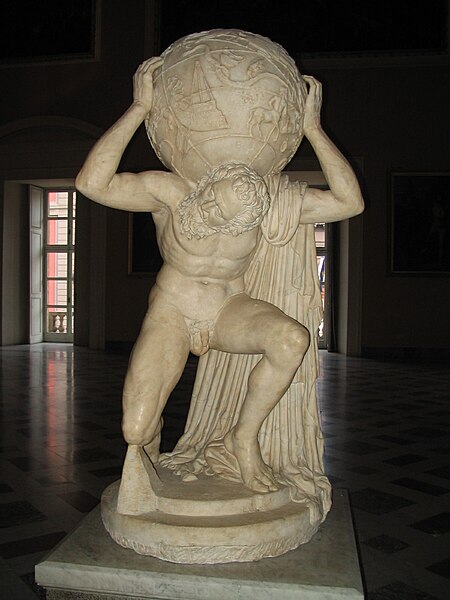Celestial globes show the apparent positions of the stars in the sky. They omit the Sun, Moon, and planets because the positions of these bodies vary relative to those of the stars, but the ecliptic, along which the Sun moves, is indicated.
Celestial globe with clockwork; 1579; partly gilded silver, gilded brass and steel; overall: 27.3 × 20.3 × 19.1 cm, diameter of the globe: 14 cm; from Vienna; Metropolitan Museum of Art (New York City)
Celestial globe; after 1621; paper, brass, oak and stained and light-colored wood; overall: 52.1 × 47.3 cm, diameter of the globe: 34 cm; from Amsterdam; Metropolitan Museum of Art
Constellation of Delphinus from a copy of 'Abd al-Rahman al-Sufi's Book of Fixed Stars, 1125
A detailed portrait of the Mughal Emperor Jahangir holding a celestial globe by Abul Hasan (dated 1617 AD)
The Farnese Atlas is a 2nd-century AD Roman marble sculpture of Atlas holding up a celestial globe. Probably a copy of an earlier work of the Hellenistic period, it is the oldest extant statue of Atlas, a Titan of Greek mythology who is represented in earlier Greek vase painting, and the oldest known representation of the celestial sphere and the classical constellations. The sculpture is at the National Archaeological Museum of Naples, in Italy.
Farnese Atlas (Museo Archeologico Nazionale, Naples)
Rear view






